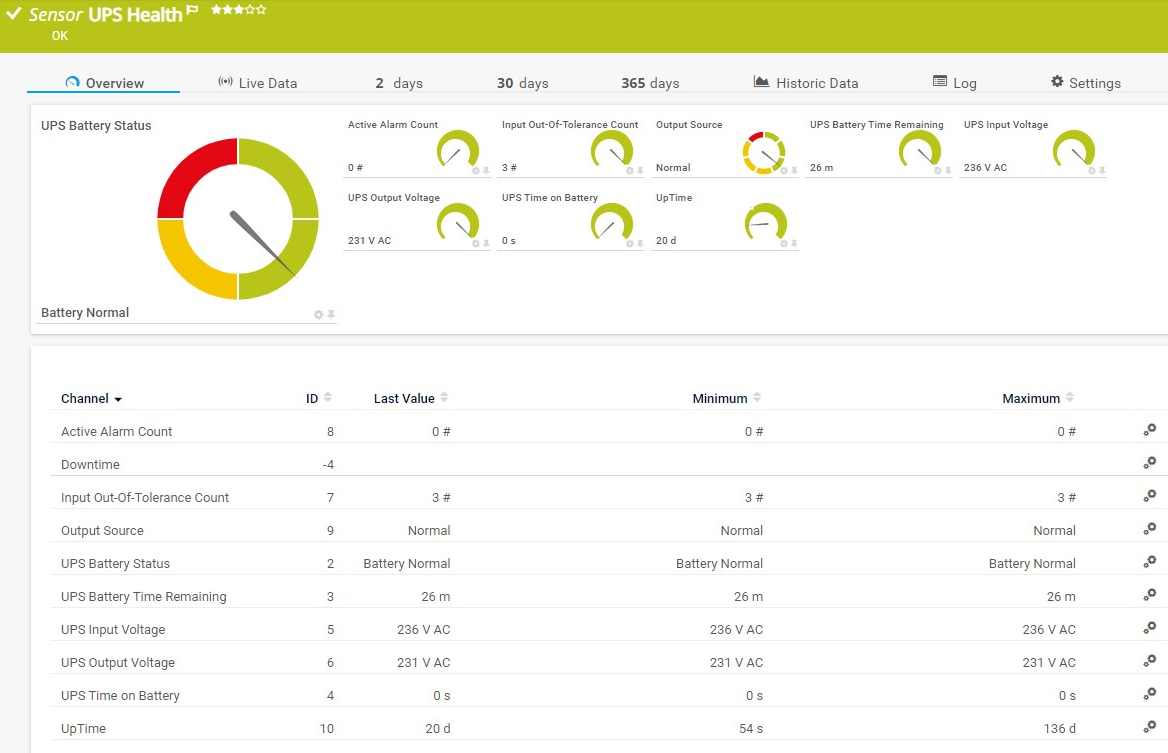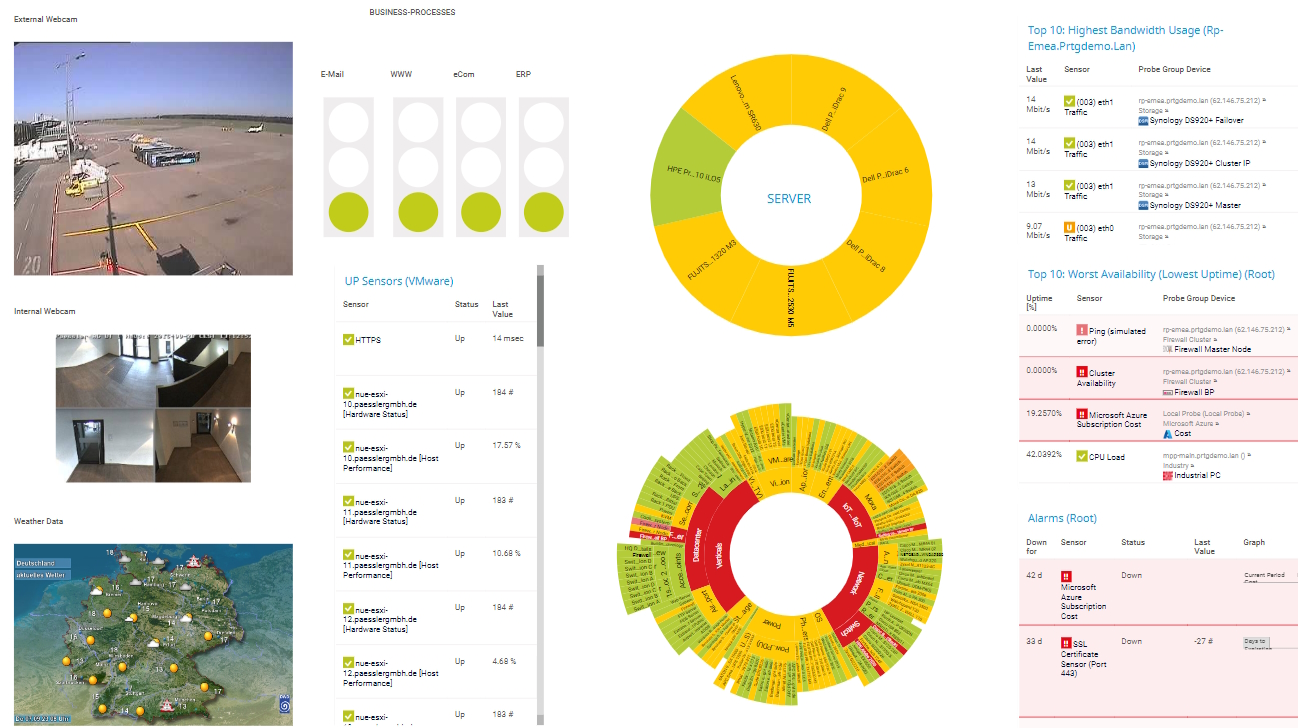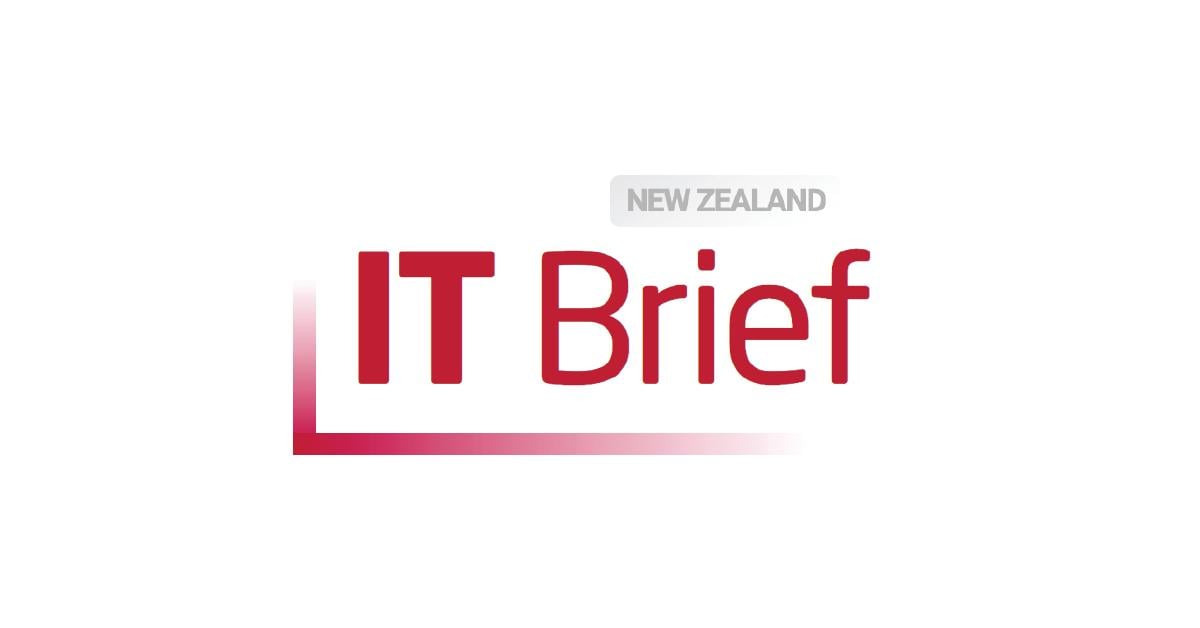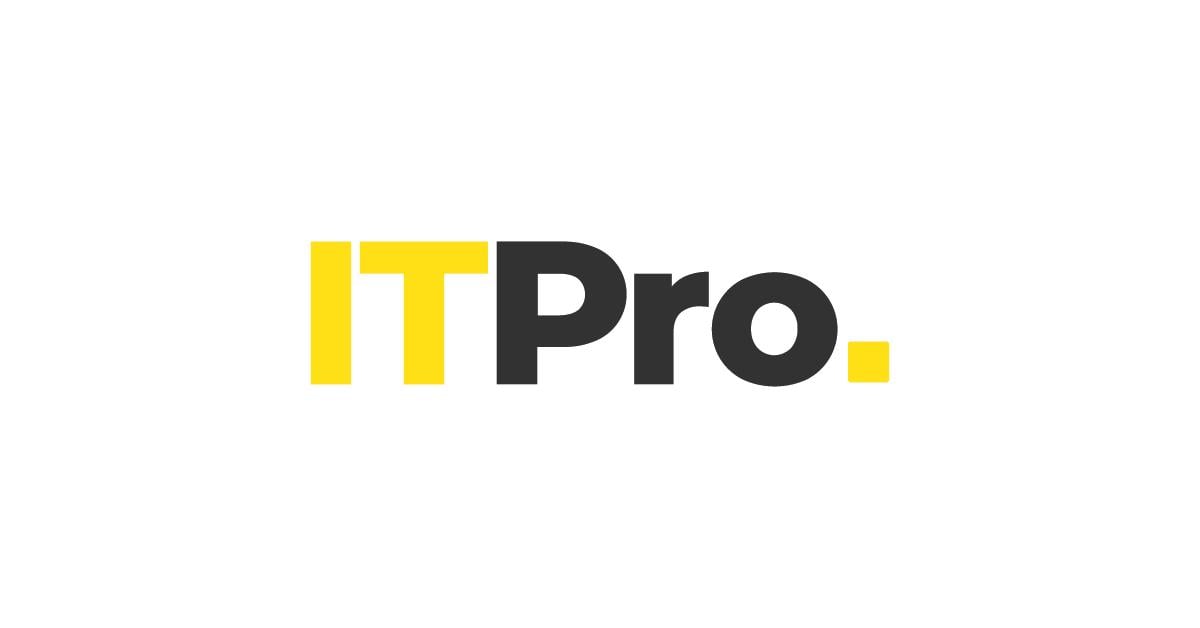UPS monitoring with PRTG
Ensure continuous, uninterruptible power supply
- Always know the status of your energy and power systems
- Monitor your power distribution units and optimize power consumption
- Achieve 100% uptime with your uninterruptible power supply
PRTG UPS monitoring: What you’ll find on this page
PRTG makes UPS performance monitoring as easy as it gets
Custom alerts and data visualization let you quickly identify and prevent power supply issues.
3 reasons why to choose PRTG as your UPS monitoring tool
Quick & easy setup
The Auto-Discovery feature of Paessler PRTG helps you set up your monitoring in minutes. PRTG will keep you on top of the status of your power equipment, such as UPSs and PDUs, and inform you how they are performing.
If your UPS devices support SNMP, PRTG will automatically detect them and create sensors to monitor their health and availability.
Fast, customized alerts
PRTG will immediately alert you to power-related events, outages, and equipment failures so you can act as quickly as possible.
Set specific warning and error thresholds so that PRTG can notify you about problems with batteries that need replacement or heavy loads where your batteries would not meet your runtime requirements.
100% uptime targeted
PRTG power supply monitoring should be part of your power backup and monitoring strategy. Monitoring and staying aware of the status of your power systems is crucial to reducing unplanned outages and helping you achieve 99.999% uptime.
Use PRTG’s historical monitoring data to analyze power capacity and resources, and report to your management on how to optimize your power supply system based on facts, not suppositions.
What UPS management looks like in PRTG
Diagnose network issues by continuously tracking the condition, health, and performance of your UPS and PDU devices. Show battery runtime, voltage, plug status, and more in real time. Visualize monitoring data in clear graphs and dashboards to identify problems more easily. Gain the overview you need to troubleshoot issues with your power supply system.
Start monitoring your power supply system with PRTG and see how it can make your network more reliable and your job easier.
How PRTG monitors power supply systems
UPS monitoring system PRTG
For generic uninterruptible power supplies, PRTG can keep an eye the following parameters, depending on what the device’s manufacturer supports:
- Battery status (normal, low, depleted)
- Remaining runtime, time on battery
- Input/output voltage
- Input out-of-tolerance count (brown-out or high/low voltage events)
- Active alarm count
- Output source (normal, bypass, battery, [voltage] boost/reduce)
- Self-test result (pass, warning, error, aborted, etc. if supported)
PDU monitoring with PRTG
You can monitor many aspects of the health of the PDU itself, and often the power draw of each of the plugs. You can also keep track of how much power each of your devices consumes over time.
For power distribution units, PRTG can keep an eye the following parameters, depending on what the device’s manufacturer supports:
- Status
- Input/output voltage
- Input phase
- Socket/plug status (on/off)
- Socket/plug current
Find the root cause of the problem with our PRTG UPS monitoring solution
Real-time notifications mean faster troubleshooting so that you can act before more serious issues occur.
PRTG is more than just UPS monitoring software: Keep an eye on other hardware & facilities
Router monitoring
PRTG can also watch your routers. In the event of error messages, high bandwidth usage, or suspicious traffic, the notification system of PRTG automatically sounds the alarm.
Server monitoring
From web to database and mail servers, PRTG server monitoring lets you keep an eye on all the key values regarding the availability and performance of your servers. This helps you increase the stability of your IT infrastructure.
Server room monitoring
PRTG ensures reliable monitoring of server rooms. Watch temperature fluctuations, humidity, and power outages.
PRTG is compatible with all major vendors, products, and systems
Your UPS monitor at a glance – even on the go
Set up PRTG in minutes and use it on almost any mobile device.
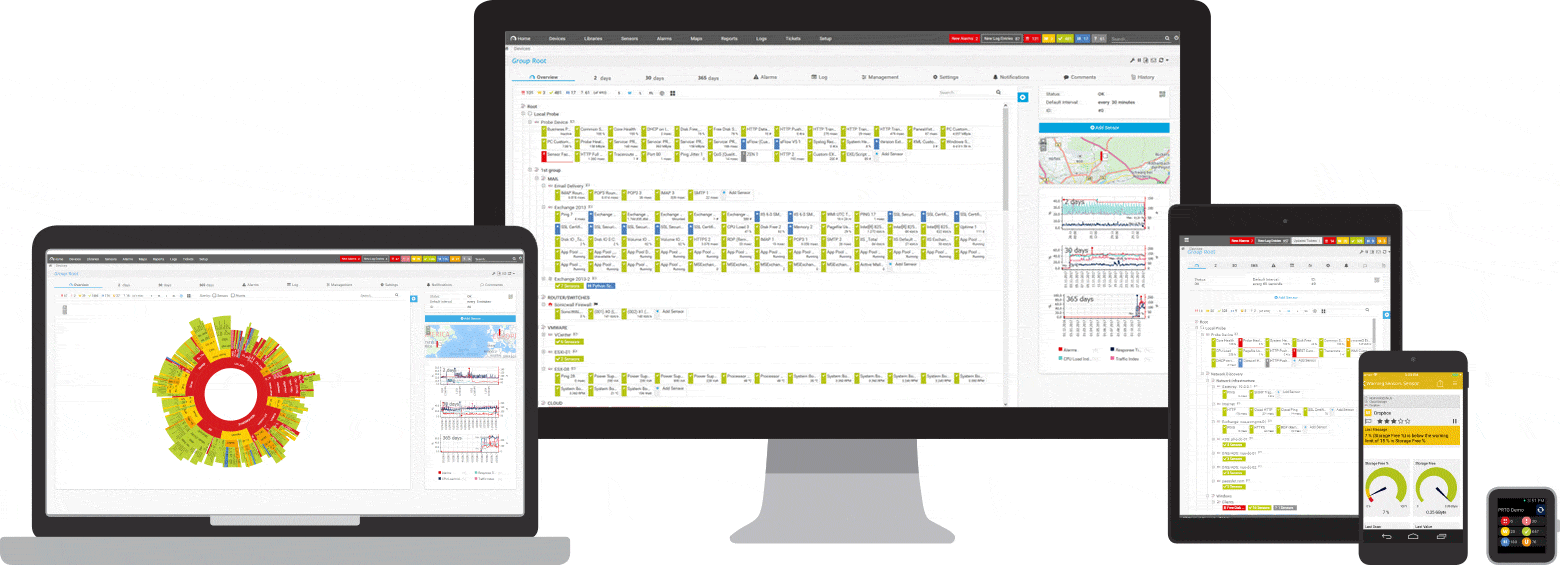

Create innovative solutions with Paessler’s partners
Partnering with innovative vendors, Paessler unleashes synergies to create
new and additional benefits for joined customers.
KnowledgeRiver
Combining their tools to a powerful solution for advanced analysis and automation, KnowledgeRiver and Paessler enable IT teams to ensure best performance for their infrastructure and networks.
PRTG makes UPS and PDU monitoring as easy as it gets
Custom alerts and data visualization let you quickly identify and prevent power supply issues.

PRTG: The multi-tool for sysadmins
Adapt PRTG individually and dynamically to your needs and rely on a strong API:- HTTP API: Access monitoring data and manipulate monitoring objects via HTTP requests
- Custom sensors: Create your own PRTG sensors for customized monitoring
- Custom notifications: Create your own notifications and send action triggers to external systems
- REST Custom sensor: Monitor almost everything that provides data in XML or JSON format
More than just a monitoring tool:
Reasons our customers love PRTG



Still not convinced?
More than 500,000
sysadmins love PRTG
Paessler PRTG is used by companies of all sizes. Sysadmins love PRTG because it makes their job a whole lot easier.
Monitor your entire IT infrastructure
Bandwidth, servers, virtual environments, websites, VoIP services – PRTG keeps an eye on your entire network.
Try Paessler PRTG
for free
Everyone has different monitoring needs. That’s why we let you try PRTG for free.
Start monitoring your power supply system with PRTG and see how it can make your network more reliable and your job easier.
|
PRTG |
Network Monitoring Software - Version 25.1.104.1961 (April 7th, 2025) |
|
Hosting |
Download for Windows and cloud-based version PRTG Hosted Monitor available |
Languages |
English, German, Spanish, French, Portuguese, Dutch, Russian, Japanese, and Simplified Chinese |
Pricing |
Up to 100 sensors for free (Price List) |
Unified Monitoring |
Network devices, bandwidth, servers, applications, virtual environments, remote systems, IoT, and more |
Supported Vendors & Applications |
|


